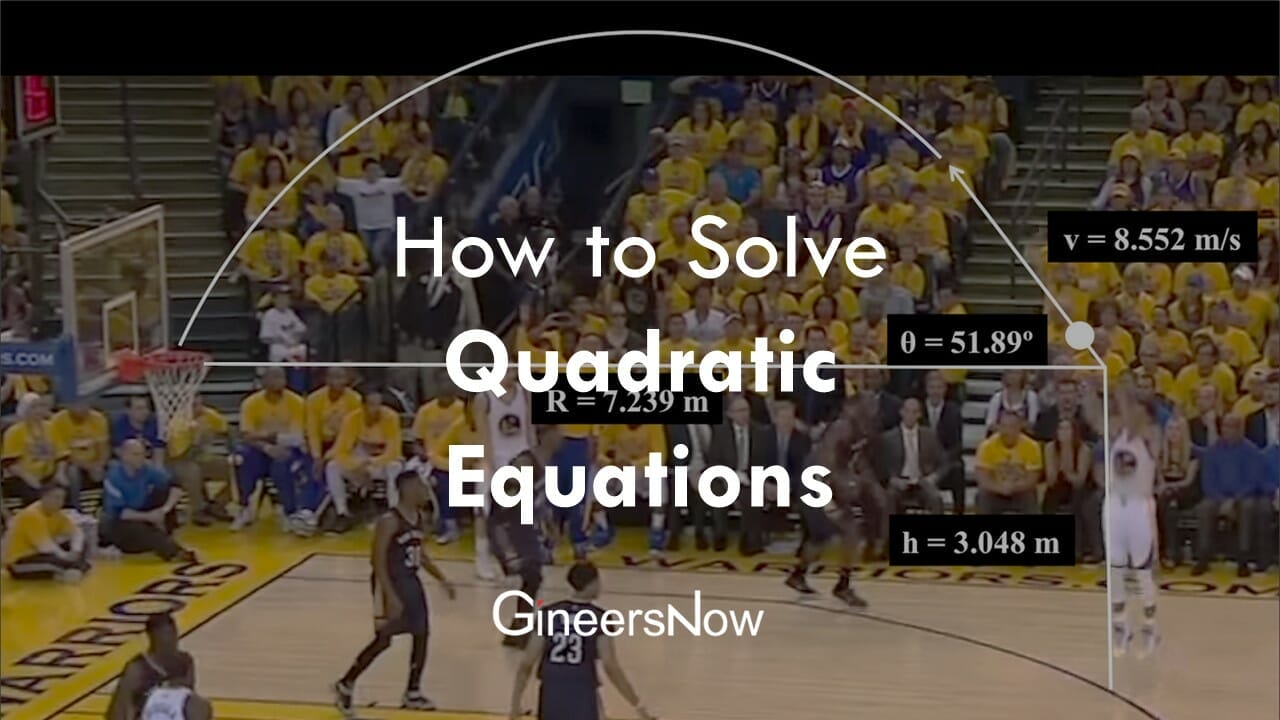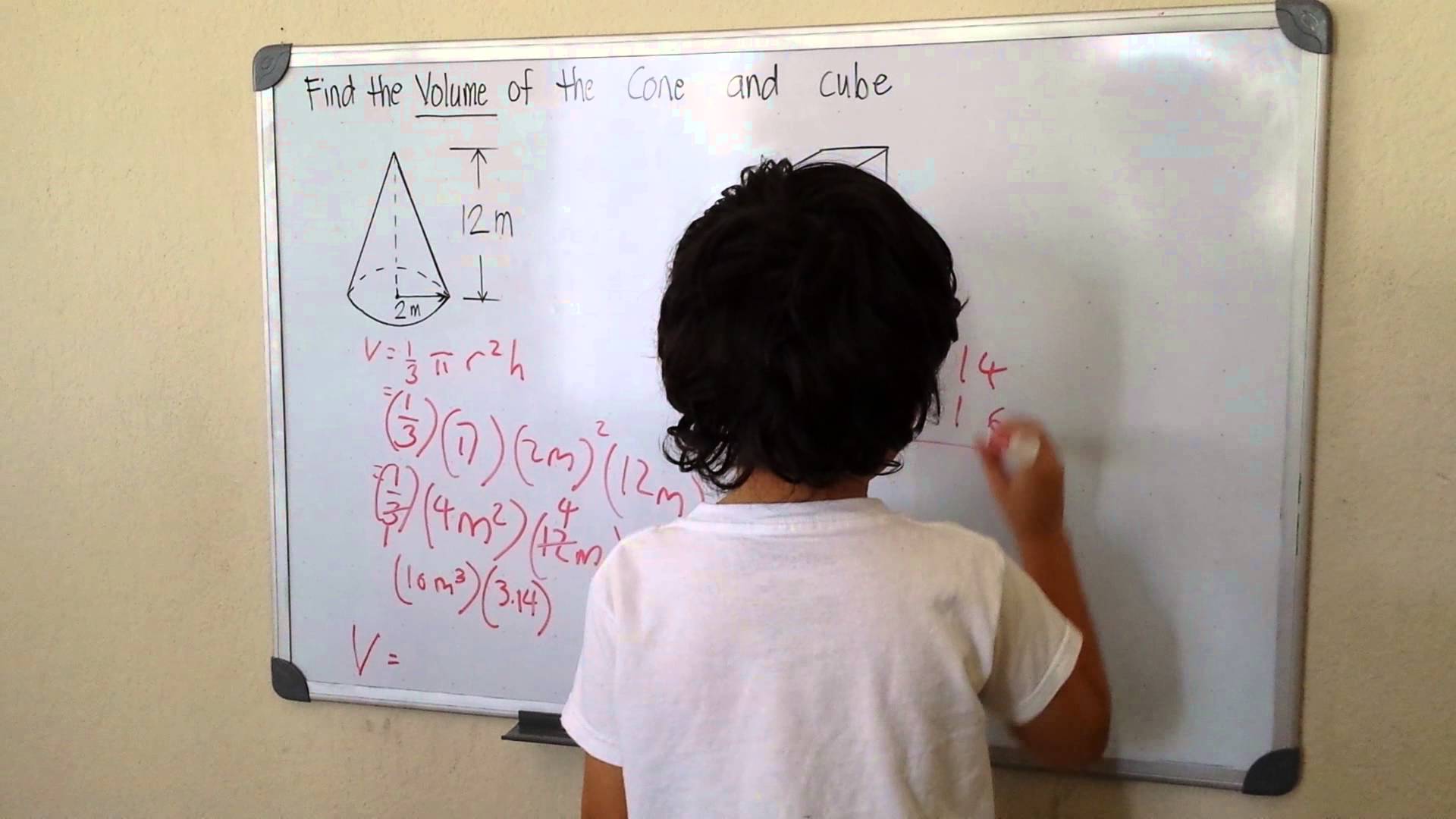In this guide, we will be providing a step-by-step guide on how to solve quadratic equations. By following these simple instructions, you will be able to solve any quadratic equation that arises in your everyday life.
If you are having trouble solving a quadratic equation, don’t worry. There is a guide that can help you step-by-step.
In this article, we will show you how to solve quadratic equations using standard methods.
First, we will define the equation and identify the variables.
Next, we will solve for the unknowns using algebraic techniques.
Additionally, we will show you how to find the solutions graphically.
Finally, we are going to answer some of the craziest questions that students ask on social media (ex. who invented this equation so I can travel back in time and kick him off the cliff to make a graph out of the SOB).

What are quadratic equations?
A quadratic equation is a formula that uses the square root of a number.
Quadratic equations are equations that have the form ax2 + bx + c = 0, where a, b, and c are real numbers and x is the variable.
The roots (solutions) of a quadratic equation are the values of x that make the equation true.

What is a quadratic formula?
To solve a quadratic equation, you need to use the quadratic formula. The quadratic formula looks like this:
Where a, b, c are the constants.
How to solve quadratic equations
The purpose of this article is to provide a step-by-step guide for college engineering students on how to solve quadratic equations.
The Quadratic Formula can be used to solve quadratic equations. To do this, you need to know the roots of the equation. The roots can be found by solving the equation for each root and then taking the square root of each result. Once you have found the roots, you can use them to solve for other variables in the equation.
One way to solve a quadratic equation is by using the quadratic formula. This formula can be used to solve the coefficients of the equation, as well as find the solutions.
The process of solving a quadratic equation usually involves solving for one or more of the coefficients, then substituting these values into the original equation. Once these equations are solved, you can use them to find other solutions in the same way.

The easiest way to solve a quadratic equation is with the quadratic formula.
- First, identify the roots of the equation.
- The roots are the solutions to the equation that lie on the graph of the equation.
- Once you have identified the roots, you can use the quadratic formula to solve the equation.
1. Start by solving for the coefficient of x in the equation.
Once you have that, solve for the roots of the equation.
Once you have those, look for a solution that uses simple algebraic techniques.
If all of that fails, there may be a solution that uses a graphing calculator or software.

2. Substitute this value into the equation to solve for y.
To solve a quadratic equation, one needs to substitute known values for the unknown y.
In this case, we will substitute the value 2 into the equation to solve for y.
This will give us:
y=-2x+8
Substituting this value into the equation gives us:
y=-16x+64

3. Use the Quadratic Formula to find the roots of the y equation.
The Quadratic Formula can be used to solve equations that contain quadratic terms.
The formula is as follows:
Where:
x = the unknown variable
y = the equation’s y-intercept
t = the equation’s coefficient of x2 (or any other quadratic term)

4: Check your answer by graphing the equation
Once you have solved the quadratic equation, you need to check your answer to be sure it is correct.
To do this, you will graph the equation.
This will help you to see if the answer is reasonable.
If the graph of the equation crosses the x-axis at two points, then the answer is correct.
It means that the graph will be a perfect parabola.
If not, you need to go back and check your work.

How to graph the equation?
To graph the equation, use the Quadratic Formula to find the two x-intercepts.
Once you have the x-intercepts, plot them on a coordinate plane.
Draw a line through the points and then extend the line outwards to create your parabola.
If your quadratic equation is not correct, you will be able to see this by looking at the graph.
The graph will not be a perfect parabola, and it may not even be close.
In this case, you will need to go back and fix your equation so that it is correct.

What are some common errors when solving a quadratic equation?
There are a few common errors that you may make when solving a quadratic equation.
One error is forgetting to factor in the equation. Another error is using the wrong equation.
Solving a quadratic equation can be tricky, especially if you make common errors.
Here are some tips to help you avoid them:
1. Make sure that the equation is in standard form.
This means that the coefficients are all on the left side of the equation and that the variables are all on the right side. If you can’t solve a quadratic equation in standard form, it’s likely because one of the coefficients is missing or something else is wrong.

2. Check your work.
Sometimes we make mistakes when we’re solving a quadratic equation, but we don’t realize it until we try to write our work down.
If you can’t solve an equation by trial and error, try rewriting it in simpler terms first before trying to solve it for real.
3. Use substitution methods to simplify your equations.
Substitution methods involve replacing one variable with another in order to simplify your equations.
For example, if you have an equation like y = 4x – 10, you could replace y with x and see if that makes the problem easier to solve (it usually does).

What are some tips for better quadratic equation performance?
Here are a few tips for better quadratic equation performance:
- Practice, practice, practice. The more you solve quadratic equations, the better you will become at solving them quickly.
- Use a graphing calculator. A graphing calculator can help you solve quadratic equations more easily.
- Check your work. If you are having trouble solving a quadratic equation, check to see if you are using the correct equation.
- Practice with examples. Once you have solved a few examples, you will be able to solve more complicated quadratic equations.

Why do engineering students study quadratic equations?
There are a few reasons why engineering students might study quadratic equations.
One reason is that quadratic equations can be used to model certain real-world situations.
For example, if you want to know how long it will take a projectile to travel a certain distance, you can use a quadratic equation to calculate the answer.
Quadratic equations can also be used to solve problems in physics and engineering.
In addition, many employers expect their employees to have a strong understanding of math, and quadratic equations are one of the more advanced types of math problems.
So if you’re an engineering student and you want to make sure that you’re ready for the workforce, studying quadratic equations is a good idea.

How are quadratic equations used in real life?
Quadratic equations are used in real life to solve various problems.
One way they are used is in financial modeling.
For example, a company may want to know how much it needs to invest today in order to have a certain amount of money in the future.
This can be modeled using a quadratic equation.
Quadratic equations can also be used to model projectile motion.
This is the motion of an object that is being thrown or shot and is under the influence of gravity.
By using calculus, we can find the trajectory of the object by solving a quadratic equation.
You can even use the quadratic equation when proposing marriage.

Some quadratic equation calculators online
Here are some apps so you can practice how to solve quadratic equations.

What is the quadratic equation useful for?
The quadratic equation is a powerful mathematical tool that can be used to solve a variety of problems.
For example, it can be used to find the maximum or minimum value of a function, determine the zeros of a function, and solve certain types of differential equations.
Additionally, the quadratic equation can be used to model real-world situations such as projectile motion and vibrations.
How to solve quadratic equations and apply them in real-life applications can be found in most industries.
What are the methods of solving a quadratic equation?
There are a number of ways that college students can use to solve quadratic equations:
- Factoring
- Completing the Square
- Quadratic Formula
- Graphing

What are examples of quadratic equation?
2x² – 64 = 0.
x² – 16 = 0.
9x² + 49 = 0.
-2x² – 4 = 0.
4x² + 81 = 0.
-x² – 9 = 0.
3x² – 36 = 0.
6x² + 144 = 0.
How are quadratic equations used in engineering?
Engineers use quadratic equations for a variety of reasons. One common application is to find the highest or lowest point on a curve.
For example, engineers might use quadratic equations to calculate the maximum displacement of a car during a crash test.
Quadratic equations can also be used to model real-world situations like airflow around an airplane wing or the movement of water through a pipe.
In each case, the equation captures the essential features of the situation and can help engineers design products that are safer and more efficient.
How to solve quadratic equations and apply them in construction, manufacturing, and other industries can be found every day.
What are the three types of quadratic equations?
Standard Form: y = a x 2 + b x + c y=ax^2+bx+c y=ax2+bx+c.
Factored Form: y = a ( x − r 1 ) ( x − r 2 ) y=a(x-r_1)(x-r_2) y=a(x−r1)(x−r2)
Vertex Form: y = a ( x − h ) 2 + k y=a(x-h)^2+k y=a(x−h)2+k.
How many jobs use the quadratic formula?
What jobs use quadratic equations? There are many jobs in which the quadratic equation is used.
Engineering:
One example is in the engineering field. When designing bridges or other large structures, an engineer will often use quadratic equations to find the best possible design. The aerospace industry also relies heavily on quadratic equations for tasks such as trajectory analysis and guidance system development. In fact, any field that involves mathematical modeling or simulation can make use of the quadratic equation.
- Aerospace engineers
- Chemical engineers
- Civil engineers
- Electrical engineers
- Environmental engineers
- Industrial engineers
- Nuclear engineers
- Petroleum engineers
Tech, Math, and Software Professionals:
How many jobs use the quadratic equation? Quadratic equations appear in a variety of disciplines, from computer science to actuarial work.
A few examples include software engineers, statisticians, and actuaries.
The quadratic equation is used to solve problems that can be described by a second-degree polynomial equation.
This makes it a powerful tool for finding solutions to real-world problems.
- Actuaries
- Computer software engineers
- Mathematicians
- Statisticians
Healthcare:
Quadratic equations are used extensively in medical and health services management.
From budgeting to forecasting to statistical analysis, quadratic equations play a role in almost every decision made by managers in these industries.
In particular, the use of quadratic equations allows for more accurate predictions of outcomes and trends, which can lead to better strategic planning and increased efficiency.
Additionally, quadratic equations can be used to identify relationships between different factors, which can help managers identify potential areas for improvement.
While not all decisions in medical and health services management can be made using quadratic equations, they are an important tool that should not be overlooked.
- Medical hospital managers
- Pharmaceutical directors

Agricultural:
Quadratic equations are used by the agricultural sector in order to forecast crop yields.
Farmers use quadratic equations to predict how much food they will be able to produce, based on information like temperature, rainfall, and soil condition.
Quadratic equations can also help farmers decide when to plant their crops, in order to get the best harvest possible.
- Farmers
- Ranchers
- Agricultural managers

Business:
Quadratic equations are frequently used in business and finance.
For example, a company might use them to calculate how much it needs to invest in order to reach a certain level of profits.
They can also be used to model financial data, such as stock prices or interest rates.
This information can then be used to make important decisions about investments and other financial matters.
- Bankers
- Finance professionals
- Insurance underwriters
- Property & real estate
- Purchasing managers, buyers, and purchasing agents

Who invented quadratic formula?
Are you asking this question so you can go back in time and stab the culprit? Well, it’s not gonna happen.
The quadratic equation is a mathematical formula that calculates the solutions to a quadratic equation. The quadratic equation has two solutions and can be solved using the Quadratic Formula. The Quadratic Formula was first proposed by mathematician Bhāskara in the 12th century.
Quadratic equations were algebraically resolved by the Persian mathematician Muammad ibn Ms al-Khwrizm in the ninth century. However, there is evidence that the Babylonians were solving quadratic equations as early as 1800 BC.
Simon Stevin discovered the quadratic formula for all instances for the first time in 1594. The quadratic formula in its modern form can be found in particular circumstances in René Descartes’ 1637 publication La Géométrie. How to solve quadratic equations seems a question that lingers for many centuries.

Why was the quadratic formula invented?
Mathematicians had been working on equations involving squares and roots for centuries before quadratic equations were finally solved in the early 1600s.
However, these solutions were all very complicated and often required several steps to complete.
In the 1700s, mathematicians began to develop a much simpler equation for solving quadratic equations.
This new equation was eventually named the quadratic formula, and it is still used today to solve complex problems with ease. How to solve quadratic equations and apply them in real-life scenarios can be found in your everyday life.

Is learning about quadratic equation really important?
Quadratic equations play a role in our everyday lives, whether we realize it or not.
Quadratic equations show up in physics and engineering problems, in financial models, and in the real-world data that we use to make informed decisions.
While students may not see an immediate use for quadratic equations, they are important for developing critical thinking skills and for understanding the world around us.
The quadratic equation is one of the most important topics in mathematics. It has many applications in mathematics, physical science, and engineering. How to solve quadratic equations and apply them in real-life scenarios can be found in your daily life.
A quadratic equation can be used to solve problems that cannot be solved by a linear equation. In addition, it is also used to find approximate solutions to some real-world problems.

Why is it called quadratic equation?
The quadratic equation is so named because it results in a quadratic equation. Quadratic equations are equations that have a squared term, and they often result from problems involving parabolas.
The most famous example of a quadratic equation is the Pythagorean theorem, which states that the square of the length of the hypotenuse of a right triangle is equal to the sum of the squares of the other two sides.

Conclusion: How to solve quadratic equations
In conclusion, how to solve quadratic equations is not as difficult as it may seem. By following the step-by-step guide provided in this article, you should be able to solve any quadratic equation with ease. If you are still struggling, don’t worry; there are plenty of online resources and tutors available to help you. So don’t wait any longer; get started on solving those quadratic equations today!
What tips do you have for solving quadratic equations? Let us know in the comments below.
















